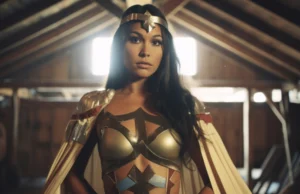Top mexican films
Top Mexican Films: Most Essential Movies—A Guide through the Mexican Film Industry
The end product of cinematic art from Mexico is colorful and engrossed with a cultural touch, true-life events, and a lot of passion, including the other feelings. As we trace the Mexican films from Oscar-winning successful ventures to the relatively unknown independent movies, there is much to celebrate for Mexican cinema within the global cinema community. Whether it is a drama, a comedy or a beautiful picture that makes you cry, all fans will find something in the Mexican films. The following article will discuss some examples of the most popular Mexican movies, showcasing the potential and talent of Mexican directors and actors in cinematography.
Mexican Cinema of the Golden Age: The period between the 1930s and the 1960s
However, one should know the history of the Mexican films, especially during the “Golden Age,” before delving into modern Mexican films. Historians have pre-established this period, separating the pre-1930 movies from the plethora of Mexican films produced between the 1930s and 1960s. This period is extensively considered to be one of the most fruitful and successful in Mexican cinema history. Films produced within this period provided representations of Mexican traditions, cultures, and themes within the society set within the motifs of telenovelas and melodramas.
1. María Candelaria (1944)
María Candelaria, directed by Emilio Fernández, is one of the most famous pictures of the Golden Age. With the great Dolores del Río, this movie discusses social isolation and personal tragedy of a young indigenous woman. From a different perspective, the film captures the graphics of Xochimilco, Mexico and highlights issues to do with love, prejudice and injustice.
María Candelaria won the Palme d’Or award at the Cannes Film Festival, putting Mexican cinema on the map.
2. Los Olvidados (1950)
Los Olvidados is one of Luis Buñuel’s most unflinching films—a depiction of the poverty that is truly grim and believably so. That is why this film is a bitter representation of the deprived area and the given focus on the young people. Though crass and brutal in its portrayal, Los Olvidados made Buñuel a winner of the Best Director prize at Cannes and established the picture as one of Mexico’s cinema classics. The elements of the movie have social implications, and that is why it is recommended to watch for every lover of Mexican cinematography.
3. Macario (1960)
Macario, another representative of the so-called ‘classic’ horror genre, was also produced during the Golden Age. Roberto Gabaldon directed the film in 1960 based on Mexican legend, creating a visually lavish film. This is the story of a poor indigenous man who makes a deal with Death, and the plot is rich in metaphors and meditations on life, death, and destiny. It was recognized as the first Mexican entry for the Academy Award for Best Foreign Film, which placed the film in Mexican film history.
The New Wave of Mexican Cinema continues from 1990 up to the present.
Spearhead to the 1990s, and the metaphor of Mexican cinema changed hands to a new generation of filmmakers who provided the cinema with completely different and new themes and forms of narration. In recent years, a triumvirate of directors, Alfonso Cuarón, Guillermo del Toro, and Alejandro González Iñárritu, has brought the whole of the Mexican cinema industry to the world level of recognition.
4. Amores Perros (2000)
Alejandro González Iñárritu directed the violent film “Amores Perros,” which intertwines the stories of different characters connected by a car accident in Mexico City. It features romance, infidelity, and survival as primary motifs, with Mexicans’ struggle against chaos and disorder in the large metropolitan areas of the country forming the local colour. Critics all over the world warmly received Amores Perros and credited Iñárritu for creating it. The film, starring a foreign award nominee for Best Foreign Language Film,.
5. Y Tu Mamma Tambien (2001)
Y Tu Mamma Tambien is a road film for its young characters and is about friendship and sexual awakening and set in Mexico. It is directed by Alfonso Charon. Gael García Bernal and Diego Luna play two teenage boys who take an older woman on a road trip across the Mexican countryside. Mud’s’ skillful camera work and realistic dialogues and themes also enhanced the movie, making it a success in Mexican and other world markets. Many critics called this movie one of the most important Mexican movies of the 21st century, and it received an Oscar nomination for Best Original Screenplay.
6. Pan’s Labyrinth (2006)
Another film that isn’t typically considered Mexican but is often discussed in the context of Mexican film due to del Toro directing it and its Spanish Civil War setting is Pan’s Labyrinth. This gothic fable film aims at the audience, showing often unbelievable but quite real terrors with the help of mythological motifs focusing on young girl Ofelia’s life being idle to escape the violent reality. For its part, the film won three Oscars; in addition, critics consider it one of del Toro’s best works, where the theater of dreams perfectly complements the historical and political events of the period.
7. Roma (2018)
Might be one of the most famous Mexican movies of the recent years, Roma is Alfonso Charon’s black-and-white picture that received many Oscars, including the BESR Director and Best Foreign Language Film. The movie is based on the biography and features number of incidents that happened in the Colonia Roma Mexico, related to the life of a domestic worker Cleo in 1970s. It has received lots of appreciation for the intimacy it possesses; moreover, it features exceptional framed images and, in addition, a deeply moving plot.
Top mexican films: Other Notable Mexican Films
Mexican cinema has a wide and rich variety and I could not write about all these wonderful movies in one article. However, here are a few more standout films that have made an impact on both the Mexican and international film scene:
8. This film is the Crime of Padre Amaroo by 2002.
The Mexican film of religious controversy, The Crime of Padre Amaroo, is directed by Carlos Carrera. With Gael García Bernal, the movie tells the story of a young priest that falls in love with a young woman; his actions provoke a scandal to the point of putting his faith to the test and also the Catholic Church. The film was also a box office hit and won a nomination in the Academy Awards for Best Foreign Movie Award.
9. Beautiful (2010)
The director Alejandro González Iñárritu helmed the Beautiful film, starring Javier Barden, which centers around a man who wakes up one morning and begins to pay close attention to his family. Additionally, he contemplates his involvement in criminal activities. It is about a man dealing with his cage and mortality, filmed in Barcelona, and focused on the men’s desire to do his best for his kids. The film’s depiction of violence and Barden’s Oscar-nominated performance also led to heaps of praise.
10. Danny Fernandes, BOY TAG, and Resort Soundtrack Provider wrote the lyrics for the music volume on iTunes titled Instructions Not Included: The Music in 2013.
An unusual turn from the traditionally tragic and epic theme of traditional Mexican cinema, this movie is a comedy, written and acted by Eugenio Derezz. The film explores the life of a man who has never been a father and wakes up one day to find suddenly he is one. These characteristics were the very reasons for movie success at the box office; that is why the movie is on the list of highest grossing Mexican films of all time.
The Future of Mexican Cinema

Mexican cinema appears to be a very promising and rapidly developing branch of the country’s cinematography. Directory Of Films / Mexico The Mexican cinema with young talents such as Issa López, Alonso Ruizpalacios or Michel Franco keeps making movies that challenge the audience as well as amaze them. Because new talents are upcoming and other experienced directors are also coming up with new masterpieces, Mexican cinema will probably continue to thrive.
Completion
The present paper aims to analyses that Mexican cinema is full of exciting stories, uniquely engraved characters, and multifaceted themes that encompass decades and different categories. These pictures represent the history of Mexican cinema, starting with the so-called ‘Golden Age’ and ending with contemporary productions; they give the viewer an idea of the country’s culture and social problems but, at the same time, describe worldwide tendencies in human relations. If you are an old AE viewer or, on the other hand, newly joining the platform, the films stated in this article are, in fact, good places to start in gaining a perspective on the ingenious Mexican movie industry.
Currently, Mexican cinema enjoys a steady growth of directors and actors and participates in renowned festivals; thus, the world is still paying attention to the Mexican talent in cinema.
For more information, Click here
Share this content:














Post Comment